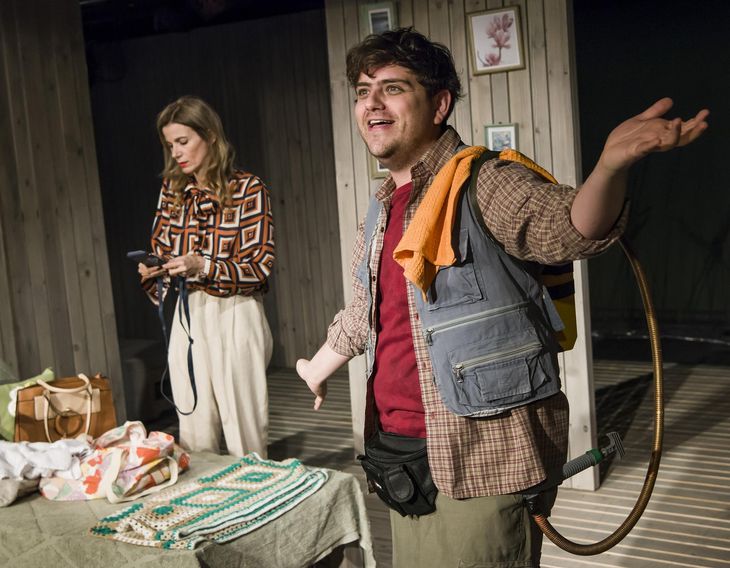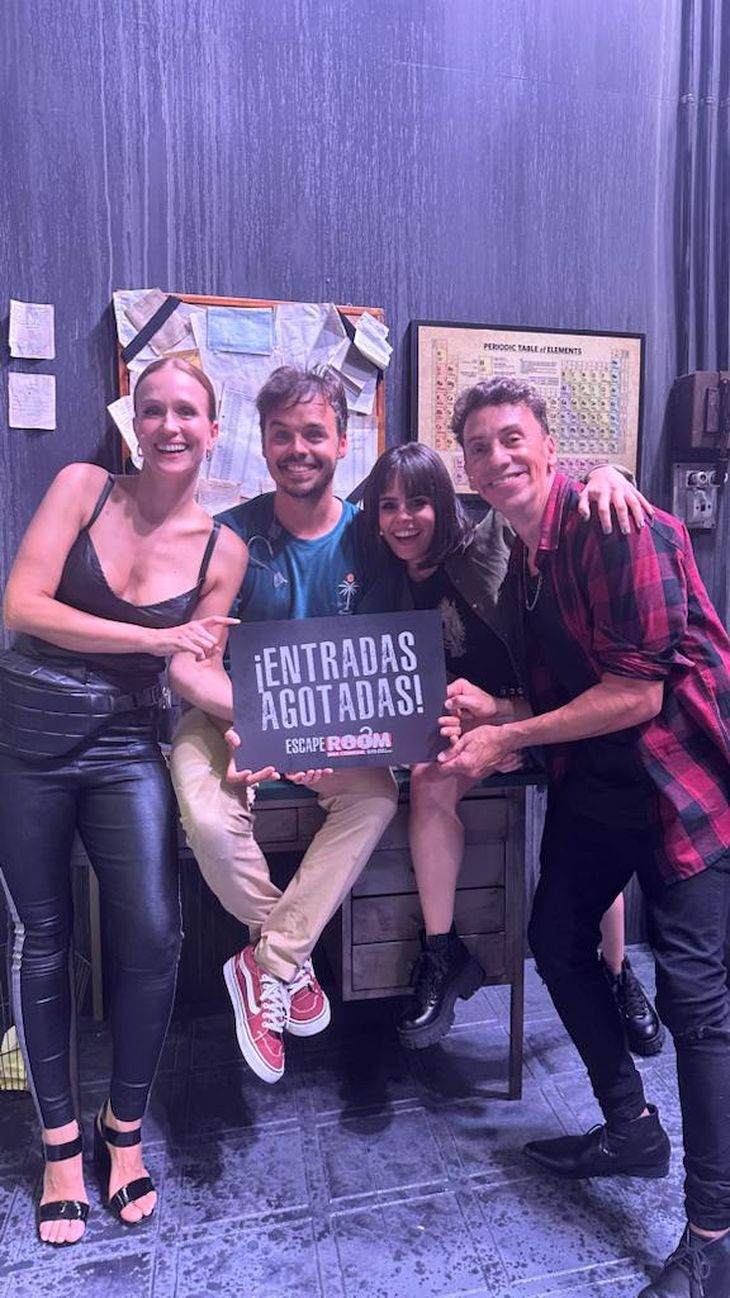According to the latest research carried out jointly by Enfoque cultural consumption and Alternativa Teatral, Theater is generally considered an expensive outing, however, this material distancing is at the same time symbolic, when the association of theater with legitimized cultural assets is noted. Words like “culture”, “elegance”, “formality” or “seriousness” show that certain perceptions about this practice can become barriers.
An idea that is repeated is that going to the theater means following certain dress codes, for some also linked to a high socioeconomic level, something that stopped being such decades ago. Among the representations about the theater, the commercial-business proposal appears valued and prioritized, especially among sporadic audiences. But they do not refer to the diversity of the proposals of that specific circuit. In the stories, two great offers appear with greater relevance that are appreciated when celebrities participate: on the one hand, the stand-up genre and comedy and, on the other, plays for children and/or musical comedies.
Stand up is valued by those who consider theater as an entertainment activity to share with friends or as a couple. They highlight as positive the connection between actors and audience due to the breaking of the fourth wall, since it strengthens the “live” character of the show. Participation as spectators of this genre is related to the modalities through which they access information: the digital social networks of actors, actresses and theaters, especially Instagram or Tiktok. The preference for comedy is also linked to relaxation and disconnection from routine, since, “life is ready for drama,” “we have every day for drama.” There is also an inclination for shows with famous actors and actresses, some considered prestigious for their careers in theater, but also in film or television or YouTubers and streamers.
The second predominant offer on the commercial circuit is works for children and adolescents and musical comedies, linked to an idea to get out of the family group, especially to see productions of adaptations of other formats such as “Violetta” or “La Caja Mágica” and, very exceptionally, proposals from official theaters. The barrier is more symbolic than material since tickets are very cheap.
In theater attendance there is a predominance of female attendees of around 68%; the majority of the public has higher education, in a proportion of more than 70%; As for age, it is a higher representation of the range of 30 to 49 years and around 45% are people professionally or vocationally related to the performing arts.
As for rooms, 10% are municipal or state-owned, 20% are private for commercial use, 3% are community-based and the vast majority, 67%, are independent rooms. That explains the boom of Argentine independent theater in the world, considered the third place behind London and New York.
Going out to the theater as a group plan appears almost exclusively as a practice of women. The choice of a work was not oriented towards the content but rather towards a kind of trust placed in actors and actresses or someone famous. Among the youngest, the new celebrities from social networks, streaming and podcasts, many of them particularly related to the stand-up genre, have more weight.
The sample of these factors is in the ranking of the most viewed of the last week: it heads “Congratulations”, with Adrián Suar, Griselda Siciliani, Benjamín Vicuña and Jorgelina Aruzzi; go on “Mina, che something sei”, with Elena Roger and Diego Reinhold; In third place is the award-winning musical “When Frank met Carlitos”; fourth left “Waiting for the float,” classic with Campi in the role he played Gasalla, Paola Barrientos, Pablo Rago, Sebastián Presta and others; fifth is located “Cha Cha Cha”, with Alfredo Casero and Fabio Alberti; sixth “Lizzy, yes I do,” with Lizzy Tagliani; seventh “Escape room”, with Benjamin Rojas and Sofia Morandi in eighth place “Mother”, with Betiana Blum and Romina Gaetani novena “What the river does”, of and with the sisters Marull and tenth “We are the guilt girls” with Malena Guinzburg and Fer Metilli.
unnamed (5).jpg
“Escape room”, released in January and one of the most viewed of the year.
Those who emphasized his taste for commercial theater, They highlighted the effectiveness of Instagram reels that appeared to them in advertising format, since, in their opinion, a small fragment allowed them to imagine what the show would be about and what it would be like. In general, the possibility of having a reel or trailer provides greater security about the choice. Because going to the theater is expensive and logistically complicated for them, there doesn’t seem to be as much room for risk.
Some also pointed out that they discover works on the billboard through bank promotions and several stated that these benefits often become the incentive. However, they are once again anchored in the commercial circuit and not in the independent one.
With the inauguration of the new government, a narrative of questioning about state financing of artistic and cultural production and circulation was reinstated. The Ministry of Culture was demoted to a Ministry of Culture and a drastic reduction in promotion and financing policies for the cultural sector. From the official speech, the need to establish new priorities in the face of the economic crisis was raised.
The majority of the opinions expressed strongly support the intervention of the State in the promotion and financing of cultural production. Cultural policies are valued for their cultural and economic implications. It is also mentioned that the role of the State is key to preventing certain cultural experiences from being the exclusive privilege of an elite, through subsidies and public policies that facilitate their access. Among the very few cases that gave a negative response, the justification lies in the need to address “other priority demands of the population.”
Various opinions highlight that art nourishes society by allowing it to question, learn and grow intellectually. The importance of artistic and cultural activities for the health and well-being of people, whose impact grows in times of crisis, also appears among the arguments in favor of State support for the cultural sector.
what-the-rio-does-maria-and-paula-marull-ctba2022-photo-carlos-furman-dsc_2406-960×540 (1).jpg

“What the River Does” premiered in 2022 at the San Martín Theater with state support from the Buenos Aires Theater Complex and later became a success on Corrientes Street.
The image of the theater is associated with large commercial halls, such as those on Corrientes Avenue, or with monumental theaters such as the Colón or the San Martín. These performances, linked to magnificence, elegance and mainstream entertainment, and a perception of the theater as a traditional and sacred space, where large productions and the presence of famous actors predominate, limit participation in the independent theater circuit and in theaters. neighborhoods.
These types of spaces are little known or remembered, frequented sporadically and by invitation, described as more bohemian, austere or intimate and understood as experiences of lower hierarchy. As for public theaters, although some are named and valued, their participation as spectators in those theaters is very low. The lack of knowledge about the options offered by official or independent spaces strengthens the perception that theater is an exclusive activity. This means that the enormous and diverse theatrical offering in Buenos Aires is not perceived as such, which perhaps requires a specific visibility policy.
A tendency is observed in the different segments to oppose the idea of the theatrical experience with attending the cinema, the latter being more accessible in symbolic and economic terms. Going to movie theaters appears as a more frequent and close activity, more “safe” in symbolic terms in relation to consumption codes, easier to share with other people and with greater availability of information about the movie. Several emphasize that when they go out to the movies they feel more “free” or “relaxed” regarding the decision about clothing. This confirms that going to the cinema or the theater does not merely imply seeing a play, but rather is a comprehensive experience marked by the context.
Source: Ambito
I am an author and journalist who has worked in the entertainment industry for over a decade. I currently work as a news editor at a major news website, and my focus is on covering the latest trends in entertainment. I also write occasional pieces for other outlets, and have authored two books about the entertainment industry.




